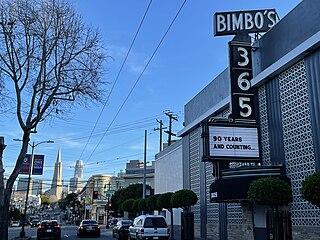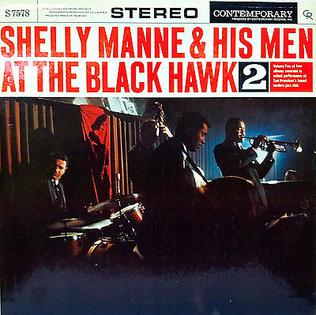
Vincent Anthony Guaraldi was an American jazz pianist best known for composing music for animated television adaptations of the Peanuts comic strip. His compositions for this series included their signature melody "Linus and Lucy" and the holiday standard "Christmas Time Is Here". He is also known for his performances on piano as a member of Cal Tjader's 1950s ensembles and for his own solo career. His 1962 composition "Cast Your Fate to the Wind" became a radio hit and won a Grammy Award in 1963 for Best Original Jazz Composition. He died of a sudden heart attack in February 1976 at age 47, moments after concluding a nightclub performance in Menlo Park, California.

Callen Radcliffe Tjader Jr. was an American Latin Jazz musician, often described as the most successful non-Latino Latin musician. He explored other jazz idioms, especially small group modern jazz, even as he continued to perform music of Afro jazz, the Caribbean, México and Latin America.

John Royce Mathis is an American singer of popular music. Starting his career with singles of standard music, Mathis became highly popular as an album artist, with several dozen of his albums achieving gold or platinum status and 73 making the Billboard charts. Mathis has received the Grammy Lifetime Achievement Award and has been inducted into the Grammy Hall of Fame for three recordings.
Black Hawk and Blackhawk may refer to:

The Fillmore District is a historical neighborhood in San Francisco located to the southwest of Nob Hill, west of Market Street and north of the Mission District. It has been given various nicknames such as “the Moe” or “the Fill”. The Fillmore District began to rise to prominence after the 1906 San Francisco earthquake. As a result of not being affected by the earthquake itself nor the large fires that ensued, it quickly became one of the major commercial and cultural centers of the city.

Eugene Joseph Wright was an American jazz bassist who was a member of the Dave Brubeck Quartet.

James Mundell Lowe was an American jazz guitarist who worked often in radio, television, and film, and as a session musician.

Armando Peraza was a Latin jazz percussionist and a member of the rock band Santana. Peraza played congas, bongos, and timbales.
Richard Francis Wyands was an American jazz pianist, composer, and arranger, best known for his work as a side-man.
Mary Stallings is an American jazz vocalist and mother of soul singer Adriana Evans.

Irving Townsend was an American record producer and author. He is most famous for having produced the Miles Davis album Kind of Blue, which is the best-selling jazz album of all time according to the RIAA. He later served as president of the National Academy of Recording Arts and Sciences of the United States.
Robert Prince was an American composer of music for dance, theater, television, film and records and a graduate of the Juilliard School. In addition to his work as composer and arranger he also performed on vibraphone and timpani.
John Anthony Pompeo, better known as Johnny Rae, was an American jazz drummer and vibraphonist.

In Person Friday and Saturday Nights at the Blackhawk, Complete, also called The Complete Blackhawk, is a 2003 four-disc collection of the 1961 live performances of the Miles Davis Quintet at the Black Hawk nightclub in San Francisco. These sets, performed with recording in mind, forged new ground for jazz musician Miles Davis, who had never previously been recorded live in a club with his combo. Material from the four sets was first released simultaneously by Columbia Records on two albums in September 1961, titled In Person Friday Nights at the Blackhawk, San Francisco, Volume 1 and In Person Saturday Nights at the Blackhawk, San Francisco, Volume 2. Although those albums were subsequently rereleased several times, the complete sets were not commercially available until Sony Records released a digital mastering of this collection. Simultaneous to this release, the material was made available as two separate double-albums, entitled Friday Night: In Person at the Blackhawk in San Francisco, Complete and Saturday Night: In Person at the Blackhawk in San Francisco, Complete. In conjunction with Sony, Mosaic Records released the 6 LP set.

Bimbo's 365 Club, also known as Bimbo's 365, is an entertainment club located at 1025 Columbus Avenue in San Francisco. It specializes in live rock and jazz shows. The location is one of San Francisco's oldest nightclub sites, and has operated under two names with a series of owners. The building started as Bal Tabarin in 1931, the same year that the 365 Club started at 365 Market Street. The two locations under separate ownership consolidated in 1951 to one location owned by Agostino "Bimbo" Giuntoli.

Storyville was a Boston jazz nightclub organized by Boston-native, jazz promoter and producer George Wein during the 1940s.

Johnny Mathis is the first studio album by vocalist Johnny Mathis that was released by Columbia Records in 1956. The subtitle A New Sound in Popular Song can be found on the back cover but not on the front of the album or the disc label; in fact, this Mathis LP has been referred to as "the jazz album".

At the Black Hawk 2 is a live album by drummer Shelly Manne's group Shelly Manne & His Men, recorded at the Black Hawk in San Francisco, California, in 1959 and released on the Contemporary label. The album was the second volume of four originally released in 1960. In 1991, the albums were re-released on CD with bonus tracks along with a fifth volume of unreleased recordings, and a Complete Live at the Black Hawk box-set was released in 2010.

Bop City was a jazz club operated by John "Jimbo" Edwards in San Francisco from 1949 to 1965. It was situated in the back room of a Victorian house at 1690 Post Street, in the Western Addition district. During its heyday, the venue was known for late-night live performances of many popular jazz artists, including Billie Holiday, Louis Armstrong, Chet Baker, and Charlie Parker, and was one of the most famous jazz clubs of its time, being instrumental in popularizing the modern jazz style in San Francisco.

Mona's 440 Club was the first lesbian bar to open in San Francisco, California in 1936. It continued to draw a lesbian clientele into the 1950s. Mona's and the gay bars of that era were an important part of the history of LGBT culture in San Francisco.















